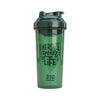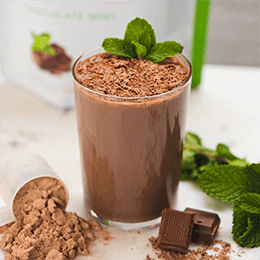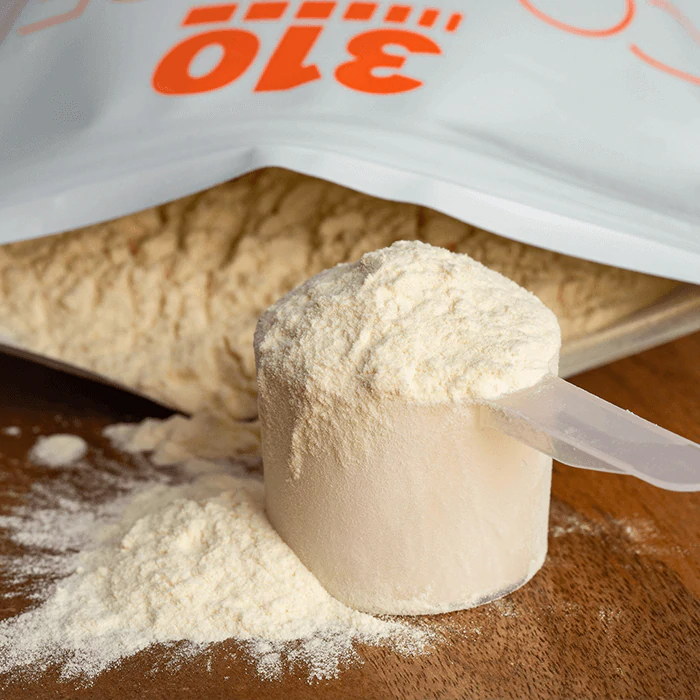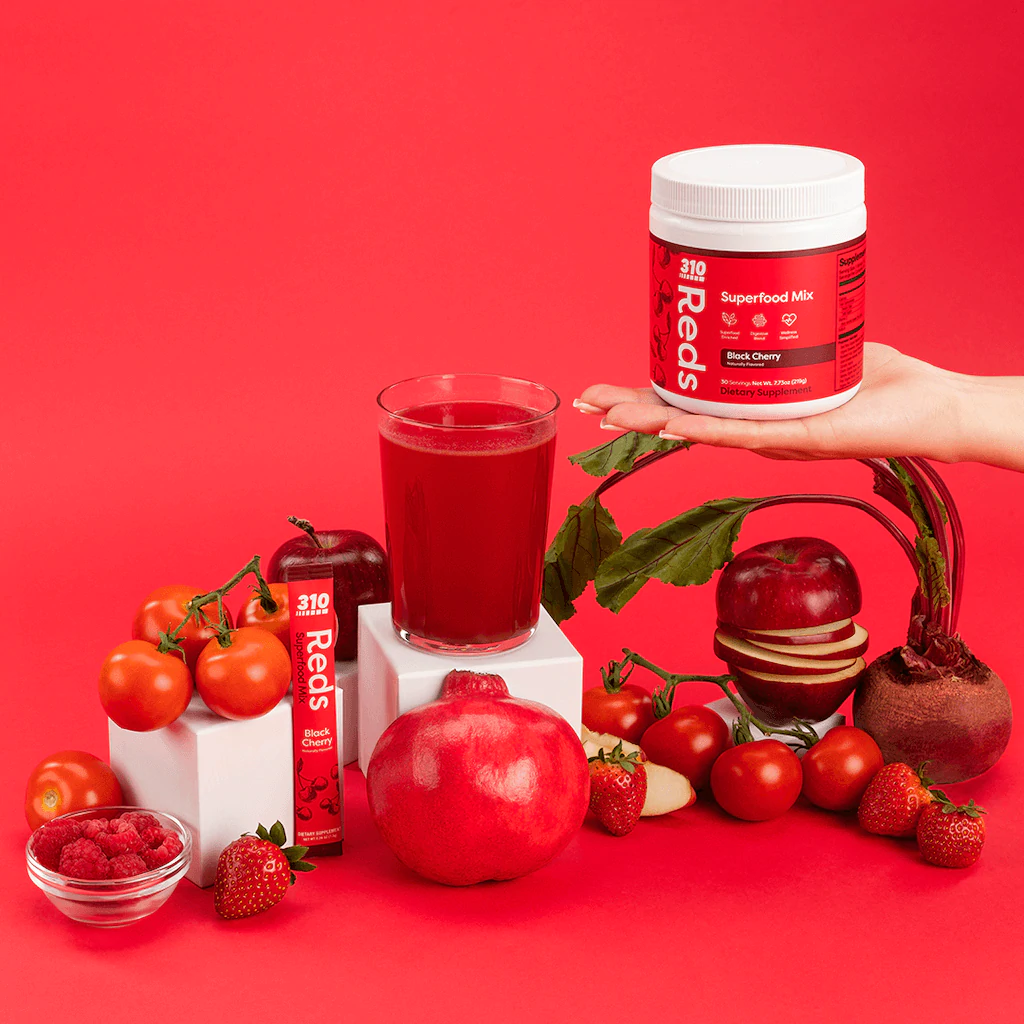Keto Diet for Beginners: Your Complete Guide
Starting your keto diet can sometimes feel like your entire way of eating is flipped upside down. That’s because the diet – though extremely popular – is far from straightforward. For the keto beginner, it can be hard to wrap your head around, especially when you feel like you have more questions than answers. How does the keto diet work? What exactly is ketosis? How much fat should I be eating? And how can all that fat and meat help with weight loss?
Not to worry – we’re going to break it all down for you in this Keto Diet for Beginners: The Complete Guide. That way, you can feel empowered and excited with the facts and resources you need to begin your new keto journey. Let’s begin!
What is a keto diet?
The keto (or ketogenic) diet is a low-carb, high-fat diet designed to help you lose weight by burning fat. The diet aims to reach a state of ketosis, which is when your body starts burning fat for energy because it runs out of carbohydrates. When your body runs out of carbs, it uses an alternate source of fuel called ketones.
While there are different types of keto diets, they are all characterized by giving up most carbs in exchange for satisfying, high-fat foods. Unlike most low-calorie or low-carb diets, the keto diet is not concerned with counting calories. Instead, you count “macros” or carbs, fats, and protein.
Where did the keto diet come from?
The keto diet has been around longer than you might think! The diet was formally introduced back in 1920 as a treatment option for children with epilepsy. Then in the 1970s, the Atkins diet popularized low-carb diets, and people started turning to keto as a potential weight loss solution. Today, the keto diet continues to be a popular option for weight loss and other potential health benefits.
Keto for weight loss
People turn to keto for many different reasons, but one of the main ones is to help reach a healthy weight.
This is because keto may help you:
- Lower your calorie intake
- Kick your sugar addiction
- Control cravings
- Burn more body fat
- Reduce fat storage
- Promote cleaner eating habits
There are also several other potential health benefits to going keto. But there are also some things you need to be careful about during the process. Check out this post on keto benefits and downsides to learn more.
Ketones and ketosis explained
Normally, your body burns glucose for energy. Glucose is a type of sugar you get from carbohydrates. Removing most of those carbs from the equation forces your body to use an alternate source of fuel from fat called ketones.
The state of “ketosis” happens when your body doesn’t have any carbs to burn, so instead, it burns stored fat. As the fat breaks down, your liver starts producing ketones, or natural acids that provide a clean, efficient source of fuel for your brain.
Keeping the body in a state of ketosis requires strict adherence to the keto diet. If you sneak in extra carbs, your body will switch over from burning fat to burning glucose and you will no longer be in ketosis.
How do you know if your body is in ketosis?
The body enters a state of ketosis after you limit your carbohydrate intake and your glucose storage runs out. This typically takes about three to four days depending on factors such as your body’s fat percentage and resting metabolic rate.
When your body starts to experience some of the side effects we mention below, those are telltale signs of being in ketosis. But you can also buy keto test strips to check your breath, urine, or blood for ketones to know for sure. When a person is in a nutritional state of ketosis, they will have ketone levels of 0.5–3 millimoles per liter.
310 Keto Test Strips
Questioning whether you are in ketosis or not? Check your ketone levels anytime & get results in seconds with our Ketone Test Strips.

For the keto diet to work, it’s important to understand what you can and can’t eat...
What to eat and avoid in a keto diet
Keto macronutrient ratios
The best way to understand the keto diet is to take everything you know about the traditional food guide pyramid and flip it over! There is a whole new set of rules when it comes to keto.
The keto food ratios you want to aim for daily in a standard keto diet are:
|
Fats |
75% |
|
Protein |
20% |
|
Carbs |
5% |

In addition, you want to stay under one of these daily limits for carbs:
- 50g or less of total carbohydrates, or
- 30g or less of net carbs
To drop your carbohydrates to less than 5% of your daily caloric intake means eliminating most grains, fruit, starchy vegetables, legumes, and sweets. Instead, you replace those calories with 75% fats.
What are net carbs?Net carbs are the number of carbs directly absorbed by the body and thus contribute calories. You calculate net carbs by subtracting indigestible carbs (fiber) from the total carb count. For example, below is the nutrition label for our 310 Vanilla Shake. To calculate the net carbs of this shake you would subtract the dietary fiber (5g) from the total carbohydrates (7g) to get 2g net carbs.

For a much more relaxed version of the diet, some people do lazy keto instead. In this version, you don’t keep track of all your macronutrients. Instead, you only track your carbs, by reading labels and trying to stay within a carb count of 30g net carbs per day (or 50g total carbs).
Pro tip: Determine your daily macros with our free keto calculator for easy personalized results.
We’ll get into the best apps to keep track of your carbs later, but first, let’s break down your standard keto diet by food group…
Keto Food Groups
Fats/Oils
You may be used to sidestepping a lot of fats like butter and oils, but in keto, you’ll want to bring them on! A high amount of fat is what’s going to help switch on the ketosis in your body, so it’s really important to get enough. When choosing your fats, aim for the healthiest, highest quality options.
These include things like:
- Grass-fed, organic butter
- Extra virgin olive oil
- Coconut oil
- Avocado oil
- Avocados
If you’re a coffee-lover, the ultra-popular keto drink, Bulletproof Coffee, combines grass-fed butter and MCT Oil to boost your body and brain. MCT Oil comes from coconut oil but has even more benefits due to how quickly it’s absorbed and utilized. So you feel the results immediately!
Protein
Next, you want to get your protein while on keto – as long as it’s secondary to the portion size of the fat on your plate. This is because the amino acids in protein can convert into glucose, which would take you out of ketosis. However, it’s possible to get the right amount of protein to stay in ketosis while preserving your lean body mass.
The fattier the cut of meat the better for your keto diet. For instance, fatty steak, bacon, sausage, and dark meat chicken are great. Fish are also high in fats, so fill up on tuna, salmon, and swordfish. You can also cook leaner proteins in more oil or butter to increase the fat content.
On a vegetarian diet? Don’t worry we’ve got you covered! Check out our guide on how to ace a vegetarian or vegan keto diet.
Dairy
Though many dairy items are normally shunned because of their high saturated fat content, they’ll be your friends on keto. Cheese, heavy cream, and eggs all help contribute to getting you into ketosis. Just try to balance the amount of dairy with your intake of unsaturated fat sources, for the most health benefits. Also, stay away from higher carb and sugary dairy sources, such as milk.
Nuts
All types of nuts and nut butter make great snacks on the keto diet since they’re high in heart-healthy unsaturated fats. The only thing you need to be careful of with nuts is the carb content – yes, there is one! As long as you stay within your carb limit, you’re free to enjoy them.
Veggies
It’s very important to eat your veggies on the keto diet, to ensure you get enough fiber, along with essential vitamins and minerals. The key is to only eat low-carb veggies, and luckily, they are some of the best ones for you, health-wise.
Some of the best low-carb keto veggies include celery, peppers, cucumbers, mushrooms, leafy greens, tomatoes, and onions. Plus, diced cauliflower makes a great alternative to rice and can be used in a variety of recipes.
For more low-carb veggie inspiration check out our blog post on Keto Foods: 8 Best Low-Carb Veggies.
Fruits
Though most fruits are too high in carbs and sugar for the keto diet, two of them (that you may not realize are fruits) are keto staples: avocado and olives. Both have pits, making them fruits. And their extremely high-fat content makes them staple keto foods. They’re also “good fats”, providing unsaturated fatty acids that promote healthy cholesterol levels.
Beyond those, you can have small amounts of low-carb berries (such as blackberries, raspberries, and strawberries) on keto, but that’s it. All other fruits will throw you out of ketosis.
Whole/Refined Grains
Though you’ve likely learned the difference between “good” and “bad” carbs, this doesn’t apply in keto. For instance, though oats are a whole grain with a slew of health benefits, they’re high in carbs, meaning they don’t fit into a keto diet.
For this reason, you’ll mostly need to stay away from all whole and refined grains. As a substitution, you can use almond flour to make some of your favorite foods, like crackers and pizza crust.
Legumes/Beans
Unfortunately, beans/legumes and keto simply don’t mix. Although beans are a healthy food, the carb content is simply too high in most of them.
Instead, here are two keto-friendly alternatives:
- Eden Organic Black Soy Beans (only 1g of net carbs per serving!)
- White kidney beans, although one serving is 12g of net carbs, so you have to be careful not to go over your limit!
Sweets/Alcohol
You’re avoiding carbs, so regular “desserts” such as cookies, cakes, and candies are out. But, that doesn’t mean you can’t get creative! Dark chocolate (70-85%) is low in carbs, so you can enjoy a small amount.
There are also many keto recipes available that use almond flour, and high-fat ingredients like heavy cream and avocados. You can also use small amounts of natural sugar substitutes, like sugar alcohol, erythritol.
And for alcohol, avoid anything with added sugar, like fruity cocktails. Some lower-carb options include wine, light beer, whiskey, rum, and gin. Although make sure to check the individual carb content for each before you enjoy!
For more keto-friendly food ideas check out our blog post on What Are The Best Zero-Carb Keto Foods.
Is 310 keto?
Yes! Our 310 products support all kinds of diets, including the keto diet. We know that life is busy and it can be hard to stick with keto if you don’t have the tools you need to succeed. This is where we’ve got you covered with our 310 Keto Kit, keto shake recipes, and a ton of keto resources.
310 Keto Kit
Take the guesswork out of low-carb and high-fat eating, and simplify your diet plan with our Ketogenic Friendly Kit. Here’s what the kit includes:
- Keto Meal Plan E-Book: 7 full days of meals (breakfast, lunch, snacks, and dinner) to get you started on keto.
- 310 Shake: A sugar-free, low-carb meal replacement shake that has only 2g of net carbs per serving while providing excellent nutrition. In every shake serving you get 15g of plant-based protein and 5g of dietary fiber – which is especially important on keto diets to ensure your digestion is running smoothly.
- 310 MCT Oil: MCT Oil is a keto must. It supplies your brain and body with supercharged healthy fats to help you get into ketosis – and it’s ridiculously easy to add 1-3 capfuls into your shake!
- Ketone Test Strips: Get a box of 100 strips to help you determine from your urine when you're in ketosis and what foods help you maintain it. Compare your readings to the colors on the box or label. The darker the color the more ketones your body is producing.
One Week Keto Meal Plan
Ready to join the keto club? Here is a 1-week keto meal plan to get you started with your keto diet. Make sure to keep track of your macronutrients in our keto calculator!
|
Breakfast |
Snack |
Lunch |
Dinner |
Dessert |
|
|
Monday |
Scrambled eggs with mozzarella cheese and salami slices |
||||
|
Tuesday |
Avocado and cottage cheese |
||||
|
Wednesday |
Plain Greek yogurt |
||||
|
Thursday |
Ham and cheese omelet |
||||
|
Friday |
|||||
|
Saturday |
Hard-boiled eggs |
Tuna salad on lettuce |
Order takeout with one of these keto-friendly options! |
||
|
Sunday |
Low-carb veggies and hummus |
Tips for maintaining a keto diet
Make a smart keto grocery list
Before you go keto make sure to stock your fridge with all the ingredients you need. We recommend making a list in advance so you can save time and energy at the store. And whenever you can, buy in bulk so you have plenty of what you need!
For the most success with this, aim to do most of your shopping around the outer edge of the store – as most of the sugary, refined, and packaged foods will be in the center.
Here’s our grocery list to get you started:
- Avocado
- Olives (green, black, kalamata)
- Lettuce (all types)
- Low-carb veggies (celery, peppers, cucumbers, onions, mushrooms, cauliflower)
- Eggs
- Cheeses (cheddar, provolone, muenster, mozzarella)
- Cottage cheese
- Cream cheese
- Plain Greek yogurt
- Lunchmeat (turkey, ham, salami, roast beef, etc.)
- Fatty meat (steak, bacon, sausage, and dark meat chicken)
- Fish (tuna, salmon, swordfish, etc.)
- Nuts and nut butter (peanut, cashew, almond, etc.)
- Seeds and seed butter (sunflower, chia, flax, hemp, etc.)
- Hummus or tahini
- Almond crackers (use sparingly or make your own)
- Coconut or almond milk
- Olive or avocado oil
- Eden Organic Black Soy Beans
For keto tips, zero carb inspiration, and keto-friendly lunch recipes, make sure to check out our blog posts 3 Easy Keto Lunch Recipes + Meal Prep Tips and What Are The Best Zero-Carb Keto Foods.
Meal prep once or twice a week
Prepping your meals in advance makes it easier to follow your keto diet, and less tempting to cheat! To do this successfully, set aside an hour or two, one or two days a week to prep some recipes/foods in advance.
This is all based on your lifestyle and individual needs, but many people like to choose Sunday, Wednesday, or both because it gives a nice period in-between days.
Here are some types of things you can do in your keto meal prep time:
- Chop up raw veggies
- Cube cheeses or lunch meats for salads
- Put nuts or seeds into individual serving bags or containers
- Cook one meat to use in various meals throughout your week
- Cook one side dish to use in lunches/dinners throughout your week
- Make a pot of hard-boiled eggs then peel them for various meals
- Separate healthy snacks into containers (raw veggies, yogurt with toppings, etc.)
- Proportion fruits and veggies for keto-friendly meal replacement shake smoothies
Keto diet apps
The keto diet can be challenging to keep up with all your macronutrient needs (carbs, fats, protein, and calories). Many keto dieters use a keto app to help stay on track.
Some well-known free carb-tracking apps include:
- My Fitness Pal
- Carb Manager: Keto Diet App
- My Keto
- Keto Diet Tracker
- Total Keto Diet
- KetoDiet
- Senza
- Lifesum
- Cronometer
- MacroTracker
Eating out on a keto diet
Just because you’re on keto, doesn’t mean you always have to stay home! Sometimes you need a break from the kitchen.
This is why we’ve created a brand new city dining guide series – bringing you the best keto restaurant options in several cities across the US! Keep the fun and the taste, all without stepping out of ketosis:
- City Dining Guide: 7 Keto-Friendly Restaurants in Los Angeles
- City Dining Guide: 7 Keto-Friendly Restaurants in San Francisco
- City Dining Guide: 6 Keto-Friendly Restaurants in Dallas
The key things to keep in mind when eating out on keto in any city are:
- Find the fatty meat dish: Stick with your meats, especially fatty meat or fish options like swordfish, salmon, chicken, bacon, and steak.
- Swap carbs for veggies: If a dish has rice, fries, or another carb on the side ask your waiter to swap it out for leafy veggies instead!
- Customize your salad: Salads are always a great option when dining out on the keto diet! You can make a few customizations to make it extra keto-friendly such as swapping your dressing for olive oil and lemon, removing croutons/bread, or adding avocado. If you can make your own salad, even better!
- Don’t be afraid to ask: Don’t see anything on the menu? Don’t be afraid to ask the waiter about other options! There might be something creative the chef can whip up that will keep you keto-friendly.
Don’t want to dine out but also don’t want to cook? Luckily, keto meal delivery kits and services can help you take some of the stress off, and provide you with new and exciting meals that require minimal effort on your part. Check out our blog post on the top 5 keto meal delivery services right now – so you can choose one (or multiple) that best meet your needs.
Adjusting to Low-Carb Living
Keep in mind, when you first start cutting the carbs in your diet, your body is likely to react – but don’t worry, this is normal! Your body needs a little time to get used to using ketones as a source of fuel, and in the meantime, it might be missing the carbs.
The good news is, if you start to experience any early symptoms of eating low-carb, it could mean you’re in ketosis, and your dietary plan is working! Plus, once your body gets onboard with the new routine (usually anywhere from 1-3 weeks), you may start feeling better than you did before.
Keto side effects
The initial symptoms of very low-carb eating are called the “keto flu”, but it’s unlikely to be anywhere near as bad as the actual flu. Some people don’t get these side effects at all, and some only get them very briefly.
These symptoms will eventually pass in anywhere from a few days to a little over a week. If they last longer than a week or two, we recommend making some changes and speaking with your doctor.
Potential “Early Keto” Side Effects:
- Tiredness/fatigue
- Bad breath (fruity smell due to the ketones)
- Fast weight loss
- Trouble sleeping
- Digestive issues
- Increased thirst
- Headaches or “brain fog”
How to help manage these side effects:
- Drink plenty of water
- Take a daily multivitamin
- Have an electrolyte drink
- Give your body plenty of rest
- Eat a high-fiber or protein snack
Potential Keto Benefits:
- Cleaner eating habits
- Supports weight loss
- Reduces appetite
- Controls cravings
To learn more about keto flu and its causes, symptoms, and treatment check out our blog post “What is the Keto Flu?”.
Are there any risks associated with keto?
Before you begin any diet it’s important to first check with your doctor to understand if the diet is right for you and how to safely adhere to the keto guidelines. While the keto diet is considered safe overall, there are some potential side effects you need to look out for:
- Increased LDL (bad) cholesterol: Increasing your fat intake with unhealthy saturated fats could put your heart health at risk by raising your LDL cholesterol levels. Instead, opt for healthier fat options like avocados, olive oil, cheese, yogurt, eggs, fatty fish, and nuts.
- Nutritional deficiencies: Variety is key to eating healthy, and the same goes for the keto diet. If you eat the same few foods on your keto diet you could be restricting your nutritional intake. Make sure you are eating different meats, fish, vegetables, nuts, and fruit options every day to ensure you are getting all that your body needs. If you need extra support, make sure to take a daily multivitamin as well.
- Increased risk for other health concerns: There is some research indicating that a keto diet could increase your risk for kidney stones, osteoporosis, and hypoproteinemia. Pay attention to how your body is feeling on the keto diet, at no point should you be in extreme discomfort or pain. If something doesn’t feel right stop the diet and speak with your doctor about what might be the cause.
*If you have any kind of medical condition or are taking medication, make sure to speak with your doctor before starting the keto diet.
Products to support your keto diet
At 310 we have a wide selection of products to help you meet your keto goals, including the below options. Make sure to check out our full collection for a list of all our 310 products.
310 Keto Kit
Take the guesswork out of low-carb and high-fat eating, and simplify your diet plan with our Ketogenic Friendly Kit. Our kit includes a Keto Meal Plan e-book, 310 Shake, 310 MCT Oil, and Ketone Test Strips.

310 Shake
310 Shakes have only 2g of net carbs per serving while providing excellent nutrition. In every shake serving you get 15g of plant-based protein and 5g of dietary fiber – which is especially important on keto diets to ensure your digestion is running smoothly.

310 Keto Test Strips
Questioning whether you are in ketosis or not? Check your ketone levels anytime & get results in seconds with our Ketone Test Strips.

310 BHB Exogenous Ketones
These keto capsules help the body stay in ketosis while curbing “keto flu” symptoms, which may happen when switching from a high-carb to a low-carb diet. Perfect for the keto dieter for better absorption of ketones.

310 MCT Oil
The perfect addition to a keto-friendly 310 Shake is MCT Oil! We extract 310 MCT Oil from coconut oil to help increase your healthy fat intake.

310 Collagen Peptides
Add more protein into your diet and restore collagen in your body with our 310 collagen powder. Collagen helps you maintain flexible, pain-free joints and youthful skin, and even soothes the lining of your gut for improved digestion.

310 Multivitamin
Our 310 multivitamin offers a balance of all 13 essential vitamins including A, C, D, E, K plus minerals and B vitamins. This helps you get the supplemental nutrition your body needs on a keto diet.

Looking for more?
We hope you enjoyed this Keto Diet for Beginners: Your Complete Guide! We know you’re excited about your keto journey, and we are too. Don’t forget to check out our other keto resources for more tools and information to live your best keto life:
- Keto shake recipes: Our keto-friendly shake recipes are perfect for maximizing your nutrition on a keto diet.
- 310 blog: Stay up to date on the latest news, tips, and strategies for the keto diet!
- Keto calculator: Determine your daily macros with our free keto calculator for easy personalized results.
- Vegetarians and vegans: Here’s your complete guide to acing the keto diet.
- Keto Food List: More on what to eat and avoid!
Sources
https://www.hsph.harvard.edu/nutritionsource/healthy-weight/diet-reviews/ketogenic-diet/https://www.ncbi.nlm.nih.gov/pmc/articles/PMC5664869/ https://www.center4research.org/keto-diet/https://www.cambridge.org/core/journals/british-journal-of-nutrition/article/effects-of-lowcarbohydrate-diets-v-lowfat-diets-on-body-weight-and-cardiovascular-risk-factors-a-metaanalysis-of-randomised-controlled-trials/B8FBAC51C156D8CAB189CF0B14FB2A46 https://www.ucsf.edu/news/2018/08/411526/keto-diet-gains-popularity-scientists-explain-what-we-do-and-dont-knowhttps://www.medicalnewstoday.com/articles/323544
















